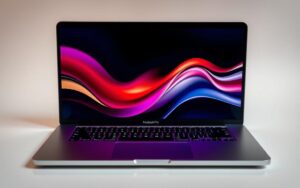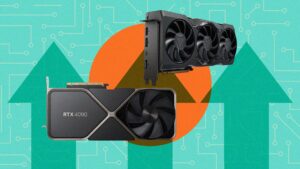Introduction
Is your Android phone running slower than usual? Are apps crashing, freezing, or behaving unpredictably? One of the most effective and overlooked fixes is clearing the cache.
Cached data helps apps load faster by storing temporary files, but over time, this data can pile up, slow your phone, or cause app glitches. Fortunately, clearing cache on Android is a safe and simple process that can boost performance and resolve common issues.
In this guide, you’ll learn everything you need to know about clearing cache on Android—including different types of cache, step-by-step instructions for various Android versions and brands, pros and cons, and performance tips.
Why Clearing Cache on Android Matters
Before we get into the how-to, here’s why clearing your Android cache is important:
- Frees up storage space by removing temporary files.
- Improves phone performance by eliminating unnecessary background clutter.
- Fixes app issues, crashes, and slow loading.
- Improves battery life in some cases.
- Eliminates outdated data that may cause conflicts with newer updates.
💡 Tip: Clearing cache does not delete your personal data like photos, messages, or saved settings.
Understanding Cache: App Cache vs. System Cache
Not all cache is created equal. There are two main types of cache on Android:
🔹 App Cache
This is stored by individual apps and includes images, scripts, and files that help the app load faster. For example, Instagram stores images and videos you’ve viewed in its cache.
🔹 System Cache (Wipe Cache Partition)
This refers to temporary system files used by Android itself. It’s stored in a separate partition and can be cleared via Recovery Mode.
How Often Should You Clear Cache on Android?
- App cache: Clear it when an app is slow, buggy, or taking too much storage.
- System cache: Clear it after a system update or when your phone feels sluggish overall.
✅ Clearing cache is a great troubleshooting step before uninstalling or factory-resetting an app or your entire phone.
How to Clear App Cache on Android
Depending on your device manufacturer (Samsung, Google Pixel, Xiaomi, OnePlus, etc.), the exact steps may vary slightly. Here are the general steps:
✅ Step-by-Step: Clear Cache for a Specific App
For Most Android Phones (Android 11, 12, 13, 14):
- Go to
Settings > Apps(orApps & notifications). - Tap See all apps or scroll through the app list.
- Select the app you want to clear the cache for (e.g., Chrome, Instagram).
- Tap Storage & cache (or just Storage).
- Tap Clear cache.
🧼 Note: Do not tap Clear storage unless you want to reset the app entirely.
✅ Example: Clear Cache in Google Chrome
- Open Settings > Apps > Chrome.
- Tap Storage & cache.
- Tap Clear cache.
This will delete temporary files but retain your history and saved passwords.
How to Clear All App Caches at Once (Only on Some Devices)
Most Android versions do not allow clearing all app caches at once, but some brands like Xiaomi and Huawei include this feature.
🔄 For Xiaomi (MIUI Devices):
- Open Security app.
- Tap Cleaner.
- It will scan for junk files and cache.
- Tap Clean up to remove all cache files at once.
⚠️ Other Options:
Third-party apps like CCleaner or SD Maid claim to clear cache, but they may not work on newer Android versions due to restricted permissions.
How to Clear System Cache (Wipe Cache Partition)
Wiping the system cache partition can resolve deeper issues like update glitches or system-wide slowdowns.
🛑 Warning: Only perform this if you know what you’re doing. It’s safe but not commonly needed unless troubleshooting.
📱 Steps to Wipe Cache Partition:
- Turn off your phone completely.
- Press and hold the correct button combination to enter Recovery Mode. Usually:
- Power + Volume Up (for Samsung, OnePlus)
- Power + Volume Down (for some Xiaomi or Realme)
- Use volume buttons to navigate to Wipe Cache Partition.
- Press Power to select it.
- Wait for the process to complete.
- Select Reboot system now.
💡 This does not delete any data—only the system’s temporary cache files.
When Should You Clear Cache?
| Scenario | Should You Clear Cache? |
|---|---|
| App is crashing or freezing | ✅ Yes |
| Phone is slow or laggy | ✅ Yes |
| You’re low on storage space | ✅ Yes |
| After a system update | ✅ Optional |
| Before selling or resetting the phone | ✅ Recommended |
| Regular maintenance | ❌ Not necessary weekly |
Pros and Cons of Clearing Cache on Android
✅ Pros:
- Frees up storage
- Resolves bugs and crashes
- Boosts performance
- Clears outdated temporary files
❌ Cons:
- Slower app loading initially after clearing cache
- Cache may rebuild over time
- Requires manual effort per app (unless using brand-specific tools)
What Happens After You Clear Cache?
- The app will take slightly longer to open the next time.
- Images or data might need to be redownloaded (e.g., from Instagram or YouTube).
- You won’t lose login info or app settings (unlike clearing data).
📌 Think of cache as a “shortcut folder” that helps apps load faster. When you delete it, you simply remove the shortcuts—not the actual files.
Bonus Tips to Keep Your Android Running Smoothly
Besides clearing cache, here are more tips to keep your phone fast and clutter-free:
🔋 1. Uninstall Unused Apps
Go to Settings > Apps and remove apps you no longer use.
🧼 2. Use Built-in Device Care Tools
On Samsung, use Device Care under Settings > Battery and device care.
📂 3. Move Photos/Videos to Cloud
Use Google Photos or Drive to offload large media files.
🧽 4. Clear Downloads and WhatsApp Media
Check Downloads and WhatsApp Media folders using a file manager and delete old files.
Common Questions About Android Cache
1. Is clearing cache safe on Android?
Yes, clearing cache is completely safe. It won’t affect your saved data, messages, or personal files.
2. Will clearing cache delete my photos or messages?
No, only temporary files are deleted. Your photos, texts, and account information remain untouched.
3. Does clearing cache improve battery life?
Indirectly, yes. Removing cache from buggy apps can reduce background processing and power drain.
4. Should I use third-party cache cleaning apps?
It’s not recommended unless the app is from a trusted developer. Many cleaning apps overpromise and underdeliver.
5. Why does the cache keep coming back after clearing?
That’s normal. Apps automatically rebuild cache as you use them to improve performance.
Conclusion
Clearing cache on Android is a simple, effective way to improve speed, fix app glitches, and recover storage space. Whether you’re troubleshooting a misbehaving app or doing general phone maintenance, knowing how and when to clear cache can save you a lot of headaches.
From clearing individual app caches to wiping the system cache partition, you now have a complete toolkit to keep your Android device running smoothly and efficiently.
Make it a habit to monitor your storage and clean your cache when needed—not too often, but just enough to keep things optimized.
- Best Technology Blogs to Follow in 2025 - July 7, 2025
- Top FMovies Alternatives for Free & Legal Streaming in 2025 - July 6, 2025
- How to Disable Gemini: A Step-by-Step Guide - July 6, 2025
Discover more from Techy247
Subscribe to get the latest posts sent to your email.















